Ostia Antica: The Rise and Fall of Rome's Ancient Gateway
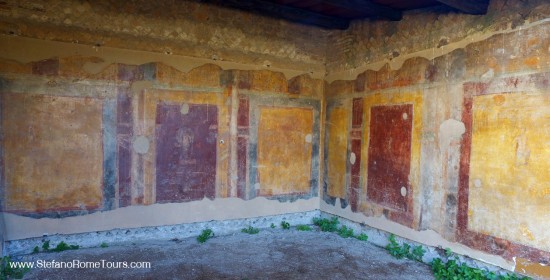
Buongiorno and welcome to Stefano Rome Tours, Rome’s leading tour company for sightseeing tours in Italy, Civitavecchia Shore Excursions, and long-distance transfers in Italy. Located along the banks of the Tiber River, Ostia Antica stands as a silent witness to the grandeur and decline of the Roman Empire. Once serving as Rome's ancient gateway, this ancient port city bore witness to the ebb and flow of trade, culture, and the bustling life of an empire at its zenith.
The meticulously excavated ruins of Ostia allow us to wander through its well-preserved streets, conjuring visions of the vibrant life that once thrived within its walls. Our guests can enjoy exploring Ostia Antica on our Ostia Antica and Cerveteri Tour from Rome and from Civitavecchia.
In this travel blog, we seek to uncover the intricate layers of Ostia's history from its origins to its bustling commercial peak, architectural marvels, and its diverse mix of cultures that animated its streets. Each remnant we encounter resonates with the echoes of ancient times, inviting you to explore the layers of Ostia's fascinating past.
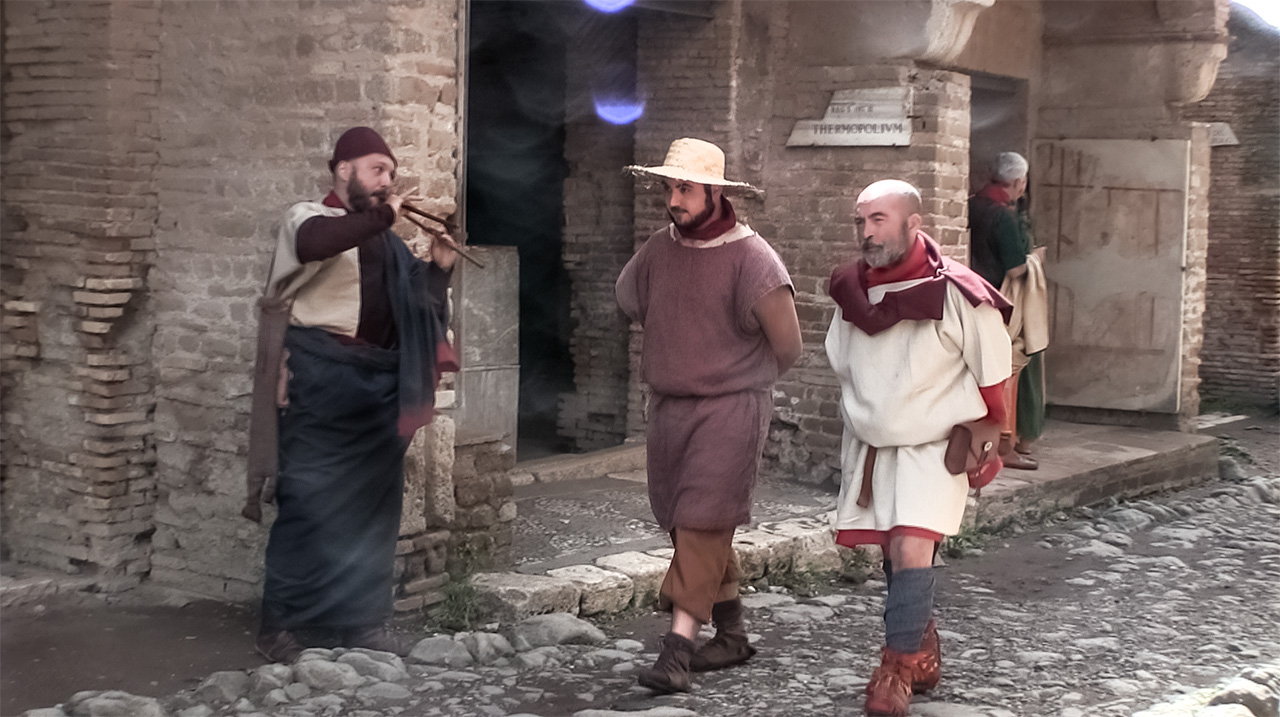
Ostia Antica:
The Rise and Fall of Rome's Ancient Gateway
Origins and Rise of Ostia
Ostia's roots can be traced back to ancient legends and historical accounts that paint a picture of its founding and early development. According to legend, Ostia may have been Rome's first colonia, established by Ancus Marcius, the fourth legendary king of Rome. The legend recounts the destruction of Ficana, an ancient town located only 17 km (11 mi) from Rome with a small harbor on the Tiber River.
Ancus Marcius is said to have founded the new colony of Ostia 10 km (6 mi) further west and closer to the sea coast. An inscription appears to confirm the establishment of the old castrum (military camp) of Ostia in the 7th century BC, making it a significant early Roman settlement.
Archaeological evidence, however, suggests that the oldest remains discovered so far date back only to the 4th century BC. The most ancient structures currently visible in Ostia, such as the Castrum (military camp) and the Capitolium (temple of Jupiter, Juno, and Minerva), are from the 3rd century BC. The opus quadratum of the walls of the original castrum at Ostia provides valuable insights into the building techniques employed during the Middle Republic.
Ostia likely developed initially as a naval base, and in 267 BC, during the first Punic War, it served as the seat of the quaestor Ostiensis in charge of the Roman fleet. This naval focus continued during the 2nd century BC. However, as Rome sought to secure its food supply during this period, Ostia's role shifted towards becoming a significant commercial port, especially for the importation of grain destined for the city of Rome.
Ostia’s Flourishing Commercial Hub
Ostia's ascent from a strategic outpost to a thriving commercial hub in the 4th century BCE was not solely driven by trade; it was also marked by the development of grand architecture and cultural institutions that showcased the city's significance within the Roman Empire.
As Ostia's economic importance grew, so too did the architectural marvels that adorned its landscape. The city's skyline was punctuated by imposing temples dedicated to various Roman deities, such as the Capitolium, a temple dedicated to Jupiter, Juno, and Minerva. These religious structures not only served as places of worship but also reflected the spiritual fervor and civic pride of the Ostian populace.
Theaters, such as the well-preserved Roman Theater of Ostia, provided entertainment for the city's residents and visitors. These venues hosted a variety of performances, from dramatic plays to comedic productions, contributing to the vibrant culture of Ostia. The public baths, such as the Baths of Neptune, showcased the Romans' dedication to communal well-being and social interaction, serving as essential gathering places for leisure and relaxation.
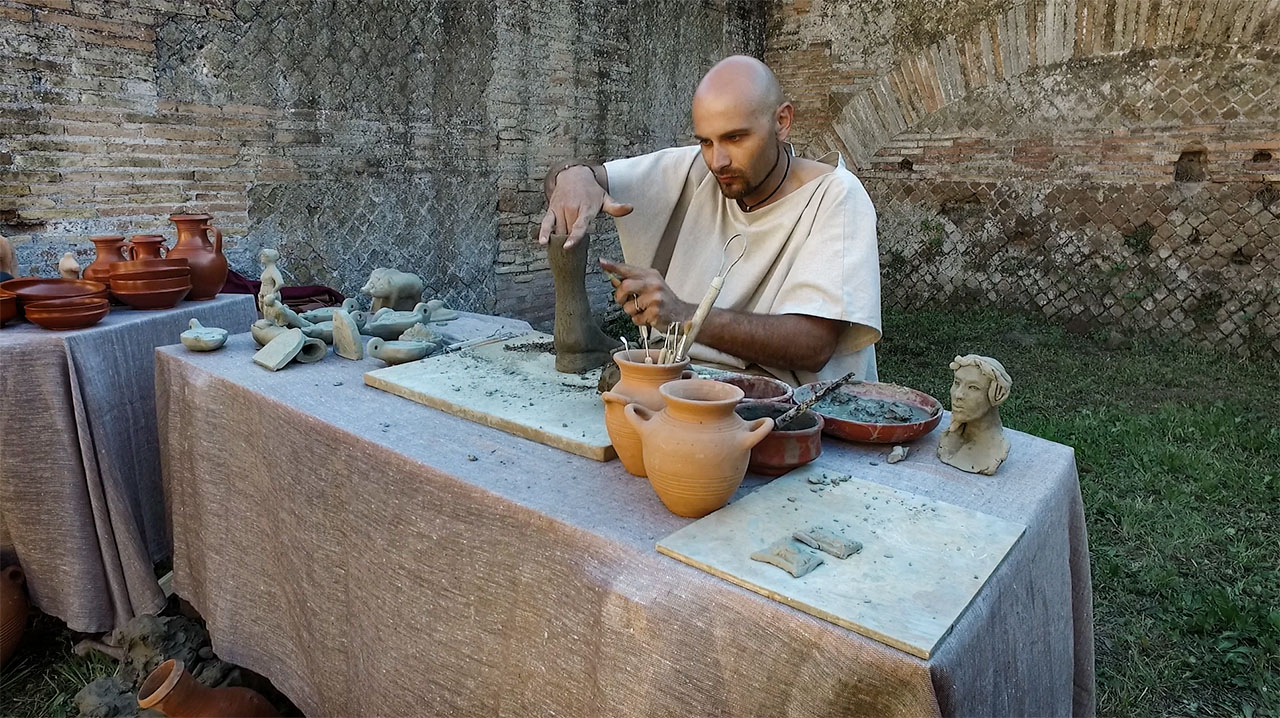
At the heart of Ostia's civic life stood the Forum of Ostia, a central square surrounded by a collection of public buildings. The Forum, reminiscent of Rome's own iconic Forum Romanum, was a bustling hub of political, social, and economic activity. Enclosed by colonnades, the Forum housed administrative offices, basilicas, and temples, underscoring Ostia's political and religious importance. The Basilica of Neptune, situated within the Forum, served as a legal and commercial center where merchants conducted business and legal matters were adjudicated.
As Ostia flourished, its population experienced a corresponding rise in living standards. The city became not only an economic extension of Rome but also a cultural and social counterpart, contributing to the cosmopolitan nature of the Roman Empire. The grandeur of Ostia's architecture and the vibrancy of its public spaces reflected the zenith of Roman urban planning and cultural expression during the peak of the Republic and into the early years of the Empire.
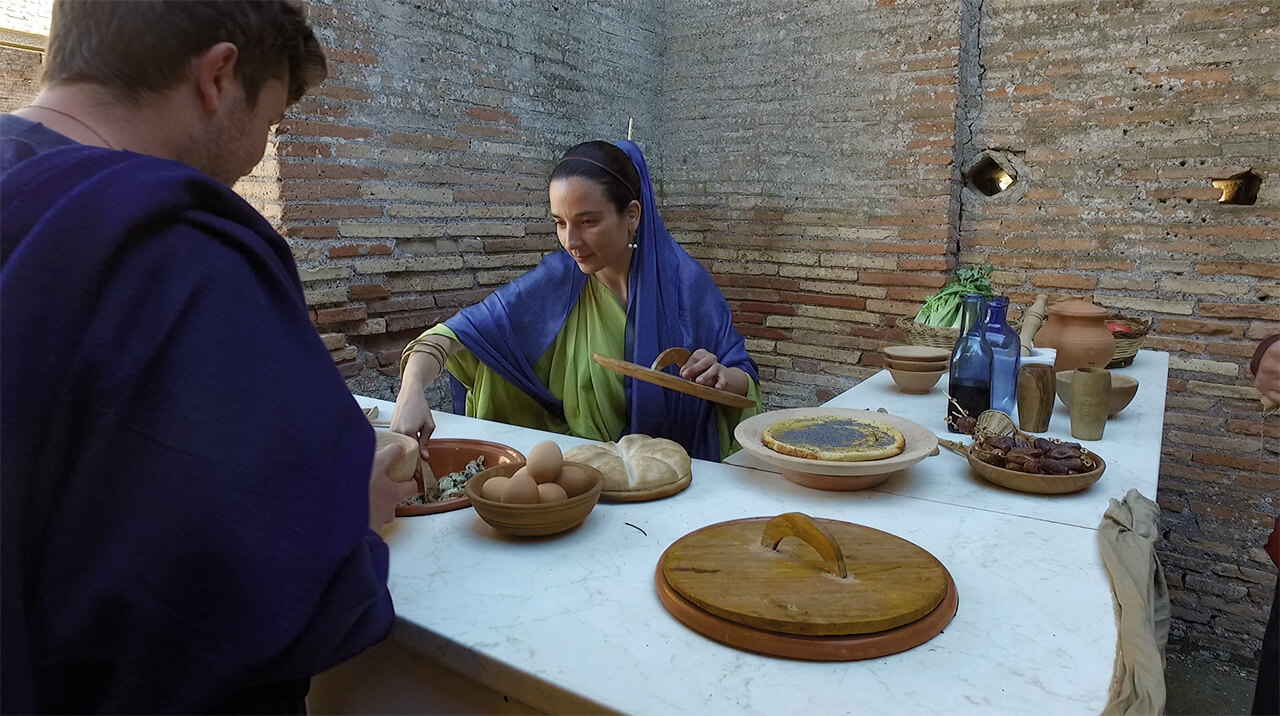
Archaeological Discoveries and Changing Perspectives
Recent archaeological excavations have unearthed a wealth of information about Ostia, transforming our understanding of the city. The ongoing research has revealed intricate details about daily life, social structures, and economic activities in Ostia. The well-preserved remains of apartment buildings, taverns, and warehouses provide insights into the lives of the diverse population that once called Ostia home.
Among the most intriguing findings is the presence of a well-preserved ancient synagogue, underscoring the multicultural fabric of Ostia. This discovery challenges previous assumptions about the religious landscape of the city, emphasizing its role as a melting pot of diverse communities. The synagogue's intricate mosaic floors and vivid frescoes provide a vivid snapshot of the religious and cultural practices of the Jewish community that thrived in Ostia. This revelation not only highlights the coexistence of different faiths within the city but also points to the cosmopolitan nature of Ostia as a thriving center of cultural exchange.
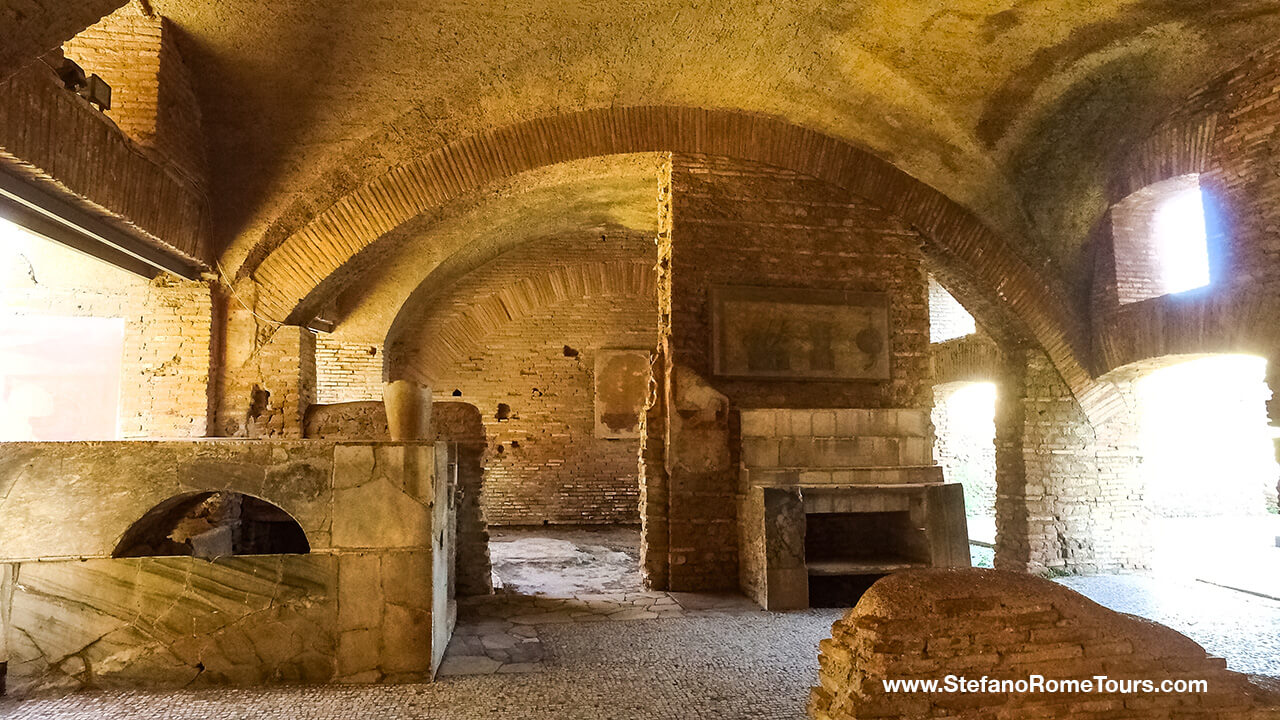
In addition to religious structures, excavations have brought to light the remains of residential areas that provide valuable insights into the daily lives of Ostia's inhabitants. The well-preserved apartment buildings showcase the architectural ingenuity of the time and offer glimpses into the living conditions, social structures, and domestic routines of the diverse population. The layout of these residences reflects the societal stratification, with variations in housing styles indicating different socio-economic statuses among the residents.
Taverns and inns discovered in Ostia offer a peek into the social and recreational aspects of ancient Roman life. These establishments, often intricately decorated with frescoes and mosaics, functioned not only as places for food and drink but also as social hubs where people gathered to converse, relax, and engage in communal activities. The discovery of such spaces enriches our understanding of the leisure and entertainment culture that flourished in Ostia.
As the archaeology of Ostia continues to evolve, each discovery adds a new layer to the narrative of this once-thriving port city. The ongoing research not only refines our understanding of Ostia's past but also contributes to a more comprehensive picture of the Roman Empire's complex and interconnected urban landscape.
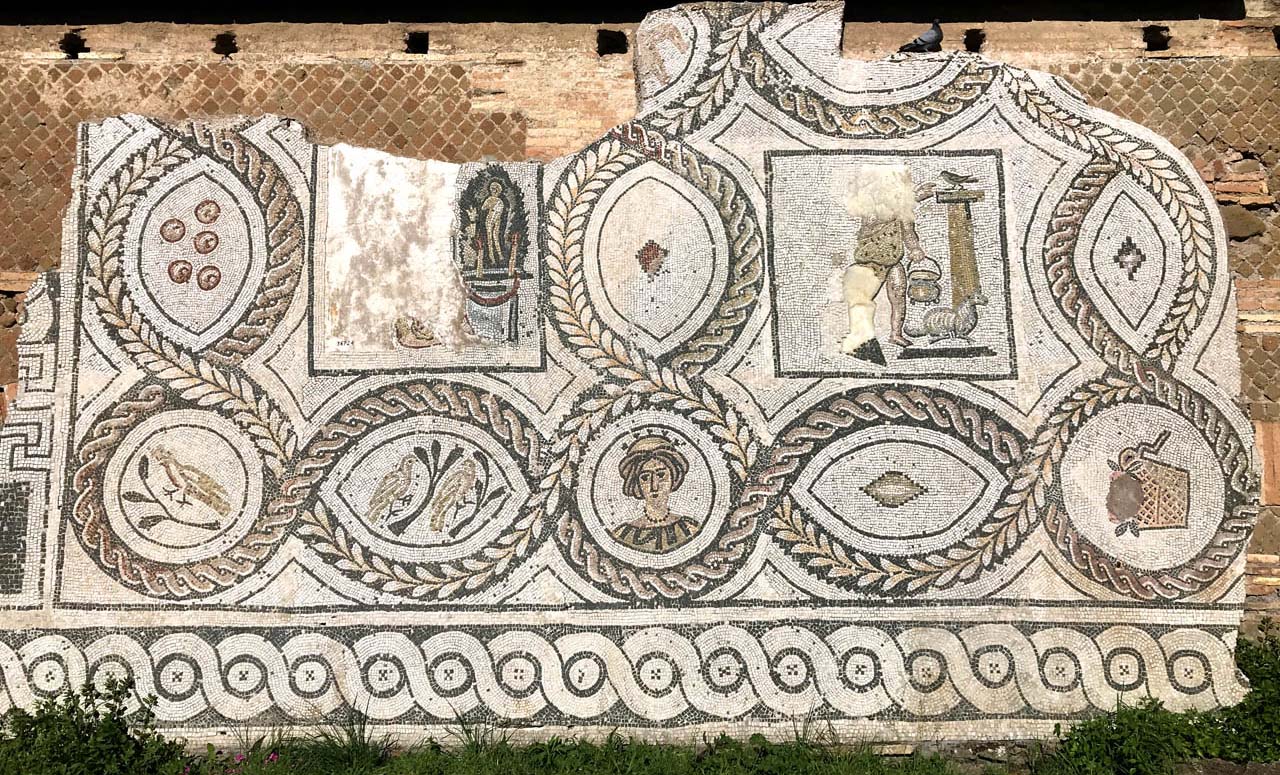
The Decline of Ostia
The golden age of Ostia, marked by prosperity and cultural vibrancy, began to lose its luster as the Roman Empire grappled with a confluence of internal challenges and external threats. The decline of this once-thriving port city was a multifaceted process that unfolded over centuries, ultimately leading to Ostia's gradual abandonment as a major center of commerce and cultural exchange.
Internal strife within the Roman Empire, characterized by political instability, economic challenges, and social upheaval, cast a long shadow over Ostia's fortunes. As the empire grappled with issues ranging from political corruption to economic decline, the very foundations that had sustained Ostia's prosperity began to erode. The once-flourishing trade routes, which had connected Ostia to the far corners of the Roman world, fell into disarray as political and economic uncertainties spread throughout the empire.
The silting of the Tiber River, a crucial lifeline for Ostia's maritime activities, further exacerbated the city's decline. Over time, sedimentation and the gradual accumulation of debris clogged the river, rendering it less navigable for the large ships that once carried goods to and from the city. This environmental challenge dealt a severe blow to Ostia's status as a major port, contributing to the erosion of its economic vitality.
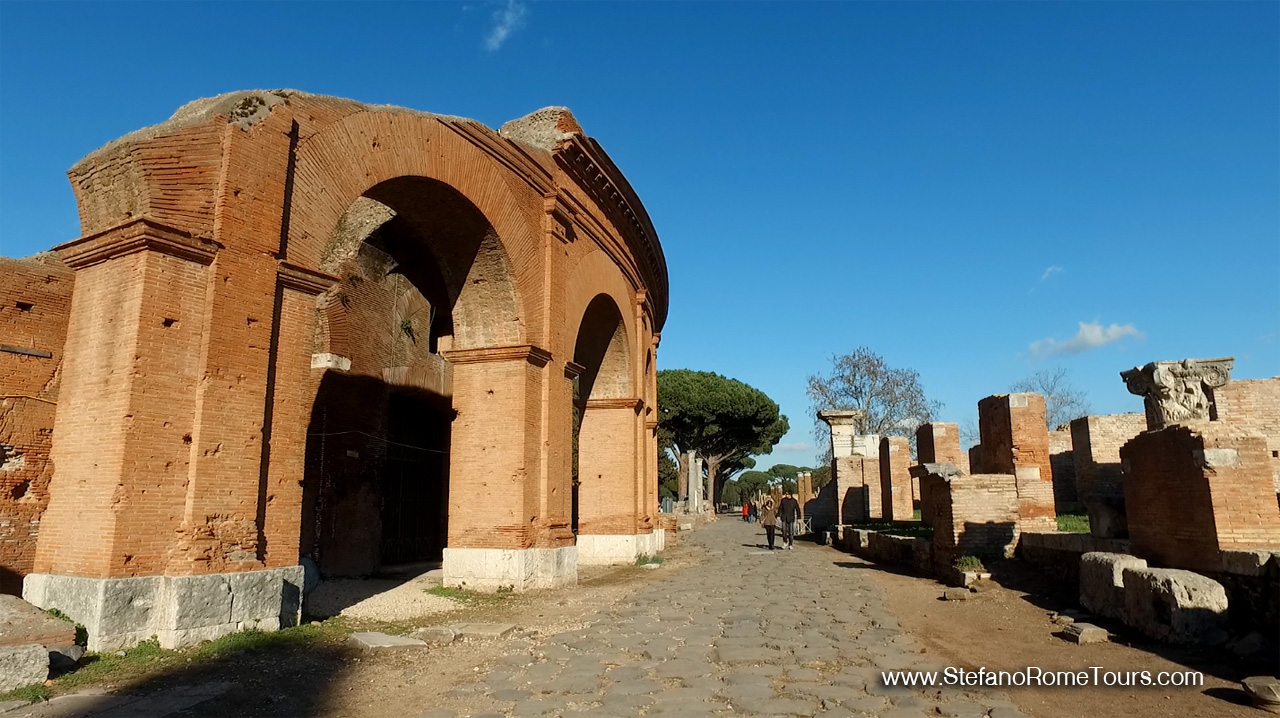
By the 5th century CE, Ostia had become a mere shadow of its former self. The grand temples, bustling marketplaces, and vibrant streets that once echoed with the sounds of commerce and cultural exchange now stood as silent witnesses to a bygone era. Many structures, including the once-majestic edifices that adorned Ostia, succumbed to neglect and abandonment.
Ostia After the Fall of the Western Roman Empire
Following the collapse of the Western Roman Empire in 476 AD, Ostia experienced a gradual decline. This decline paralleled the broader demographic shift in Rome, where the population plummeted from an estimated 700-800,000 people in AD 400 to 200,000 or less by 500 AD. The dwindling population had a cascading effect on the surrounding regions, including Ostia.
During the subsequent centuries, Ostia faced further challenges. In 849, the Battle of Ostia unfolded, a naval conflict between Christians and Saracens (Muslims). This battle added another layer of turmoil to the region and likely contributed to the ongoing decline of Ostia.
As the city's fortunes waned, the remaining inhabitants made a strategic decision to relocate. They moved to a nearby settlement called Gregoriopolis, seeking a more viable and secure location. This migration marked a significant moment in Ostia's history, signifying the end of its prominence as a thriving port city.
The abandonment of Ostia and the relocation of its inhabitants to Gregoriopolis underscored the profound impact of demographic shifts, external conflicts, and changing socio-political dynamics on the fate of ancient Roman settlements in the post-imperial period.
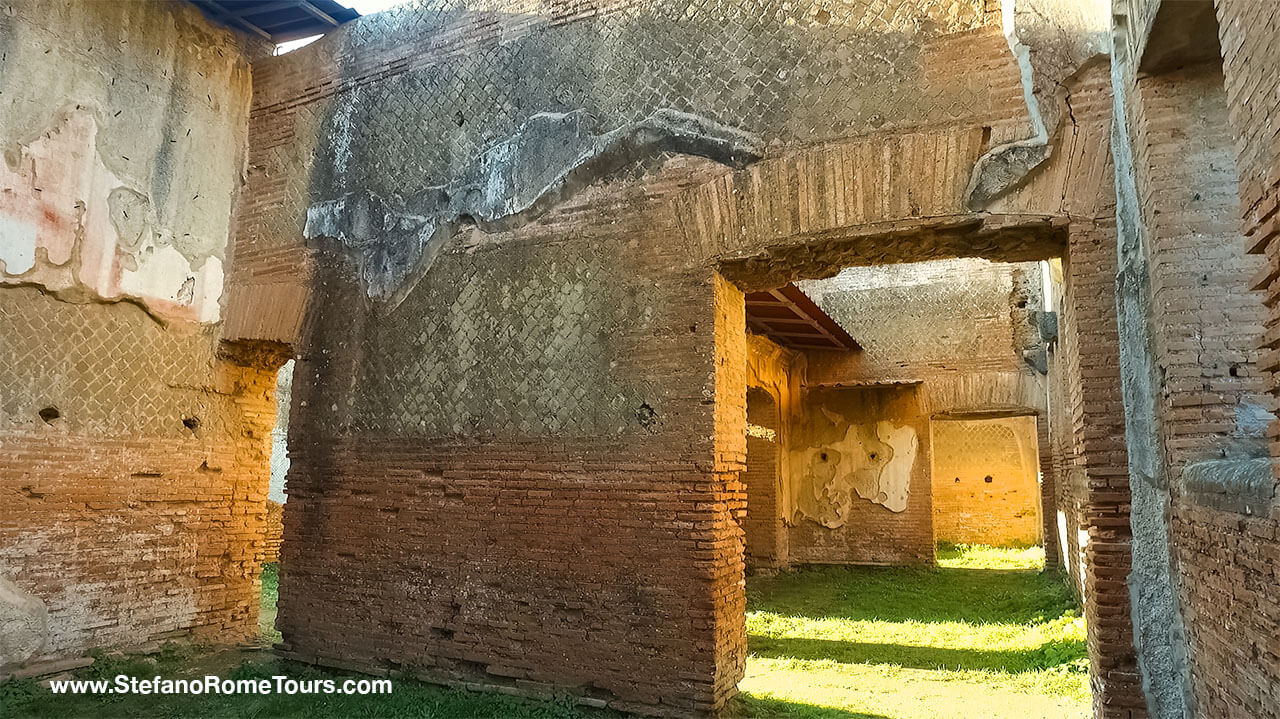
Rediscovery and Preservation of Ostia Antica
The rediscovery and preservation of Ostia underwent significant phases, with pivotal contributions during Benito Mussolini's regime and the post-war period. These efforts have transformed Ostia from a forgotten relic to a well-preserved archaeological site that allows visitors to step back in time.
Under the Fascist regime of Benito Mussolini, massive excavations were initiated between 1939 and 1942. These ambitious projects aimed to unearth the historical treasures of Ostia, focusing particularly on remains from the Republican Period. The excavation work, led by scholars and archaeologists, brought to light crucial insights into the ancient town's topography. However, the progress was abruptly halted due to the eruption of World War II, as Italy became a major battlefield.
In the post-war period, the resumption of archaeological investigations at Ostia marked a new chapter in its preservation. In 1954, the first volume of the official series "Scavi di Ostia" was published, concentrating on the town's topography and authored by Italo Gismondi. This marked a crucial step in systematically documenting and understanding Ostia's layout and structures.
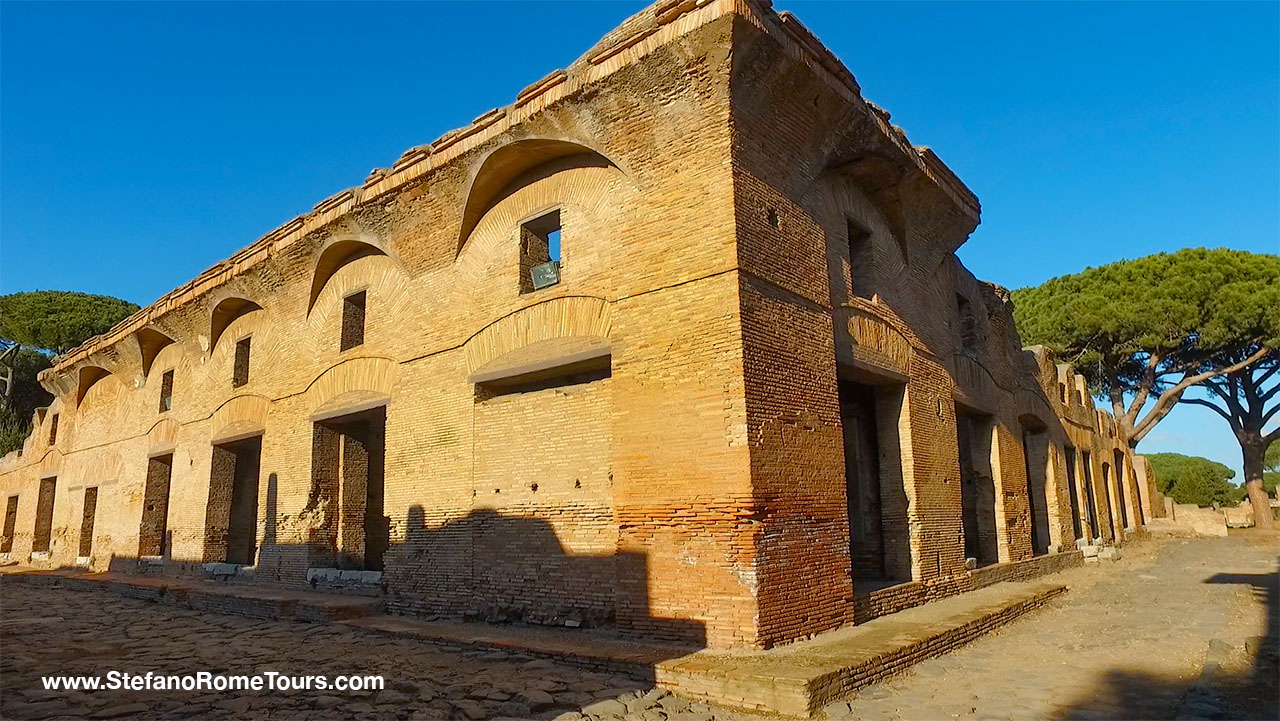
Despite a hiatus caused by the war, ongoing research and excavation efforts persisted, reflecting a commitment to unraveling the mysteries of Ostia's past. The continuation of these endeavors attests to the enduring fascination with this ancient Roman city.
Even following decades of archaeological work, it has been estimated that approximately two-thirds of the ancient town remains unexcavated. This realization underscores the vastness of Ostia and the potential for future discoveries that may further enrich our understanding of this ancient Roman port city.
Ostia Antica stands as a poignant testament to the ebb and flow of civilizations. Its rise and fall parallel the grand narrative of the Roman Empire, and its archaeological remains provide invaluable insights into the complexities of ancient urban life. As we continue to unearth Ostia's secrets, our understanding of Rome's ancient gateway evolves, revealing a rich history, trade, and cultural exchange that reverberates through time.
You too can walk in the footsteps of the Ancient Romans and explore the ruins of Ostia Antica from Rome either on your own relying on public transportation, or by booking a day tour from Rome to Ostia. We invite you to browse through the vast collection of tours that we offer on our websites, each carefully crafted to enhance your trip to Italy effortlessly and comfortably.
Tours from Rome to Ostia Antica:
Stefano Rome Tours offers an exciting day trip from Rome to Ostia Antica and Cerveteri for a wonderful exploration of two of Italy's prominent ancient civilizations: the Ancient Romans and the Etruscans. This tour is available as a day tour from Rome and a Shore Excursion from Civitavecchia.
Ostia Antica and Cerveteri Tour
Embark on a captivating journey through time with Stefano Rome Tours on the Ostia Antica and Cerveteri Tour, a private experience that brings the ancient worlds of Rome and Etruria to life.
Begin by walking in the footsteps of the ancient Romans in Ostia Antica, a remarkably preserved city that once thrived as Rome's bustling port.
Midday, take a delightful detour to the medieval hilltop village of Ceri, where you'll indulge in a sumptuous local lunch that captures the essence of Italian culinary tradition.
Afterward, explore the sacred grounds of the Banditaccia Necropolis in Cerveteri, where the ancient Etruscans laid their dead to rest in elaborate tombs that echo their enigmatic culture.
Throughout the tour, enjoy the convenience of pick-up and drop-off at your Rome hotel or Civitavecchia cruise ship, all while traveling in comfort with a private deluxe vehicle and an English-speaking driver.
